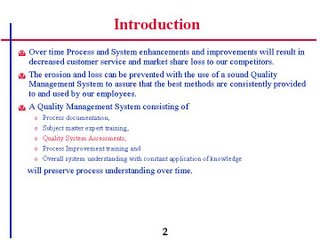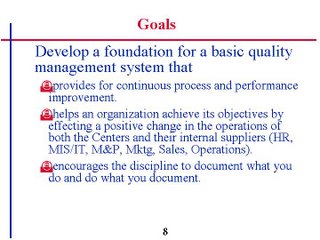I have been involved in many audits (Baldridge, ISO, Educational) that include large corporations and educational (school systems) and most of them have been a political joke. Have the time the auditors had no idea what they were doing and it came down to 1 or 2 people who made all the decisions regardless of data and information. Unfortunately, I have been on some of these type of teams and I was embarrassed to be associated with the group and the organization that conducts the audits.
The intent is good but like most plans they fall short because of political and monetary gain (by audit & company leaders) by those overseeing the audits to make sure they gain a long term commitment to keep the money, audits,recognition flags and patches coming.
Many managers/administrators have no idea what their people are doing in a full day. There are too many employees still making errors and their are still far too many consultants getting paid to come in and tell leadership what is already known within their own organizations.
Create your own internal Quality System Assessment. Use the following as a model:
Over the years I have created and developed a Quality Tool/Technique that I call "Quality System Assessment" (QSA). It was designed to be used for any industry (quality, business, education, government). The major design inputs were taken from the Deming Award, ISO 9000, Motorola, Malcom Baldridge and my own quality assessment experiences.
I have been certified and trained as a Baldridge Auditor and Judge (Michigan). ISO Auditor and Lead Auditor. Certified ASQ Manager & Auditor. Trained as a Lead Quality Advisor from Florida Power & Light (Deming Award Winners). Six Sigma Black Belt (AT&T). Attended numerous classes at Motorla University.
My hope in sharing this is for the reader to be able to have a model to create/design their own QSA that will help improve systems and processes within any organization.
I will post the Slides in a PowerPoint Presentation format.
Click on SLIDE To Enlarge & Print
Remember to Click PICS to Enlarge

Click Slides to Enlarge



It is my hope that you will be able to use my QSA Model to identify potential problems and improvements in your systems.
Soon I will provide some QSA analysis questions to help with the Assessment.
Updated 8/15/10 - go to http://qualityg.blogspot.com/2008/04/quality-system-qsa-commentsquestions.html
please let me know if the model proved useful to you or your organization.
Owned, Developed and Created by qualityg




























